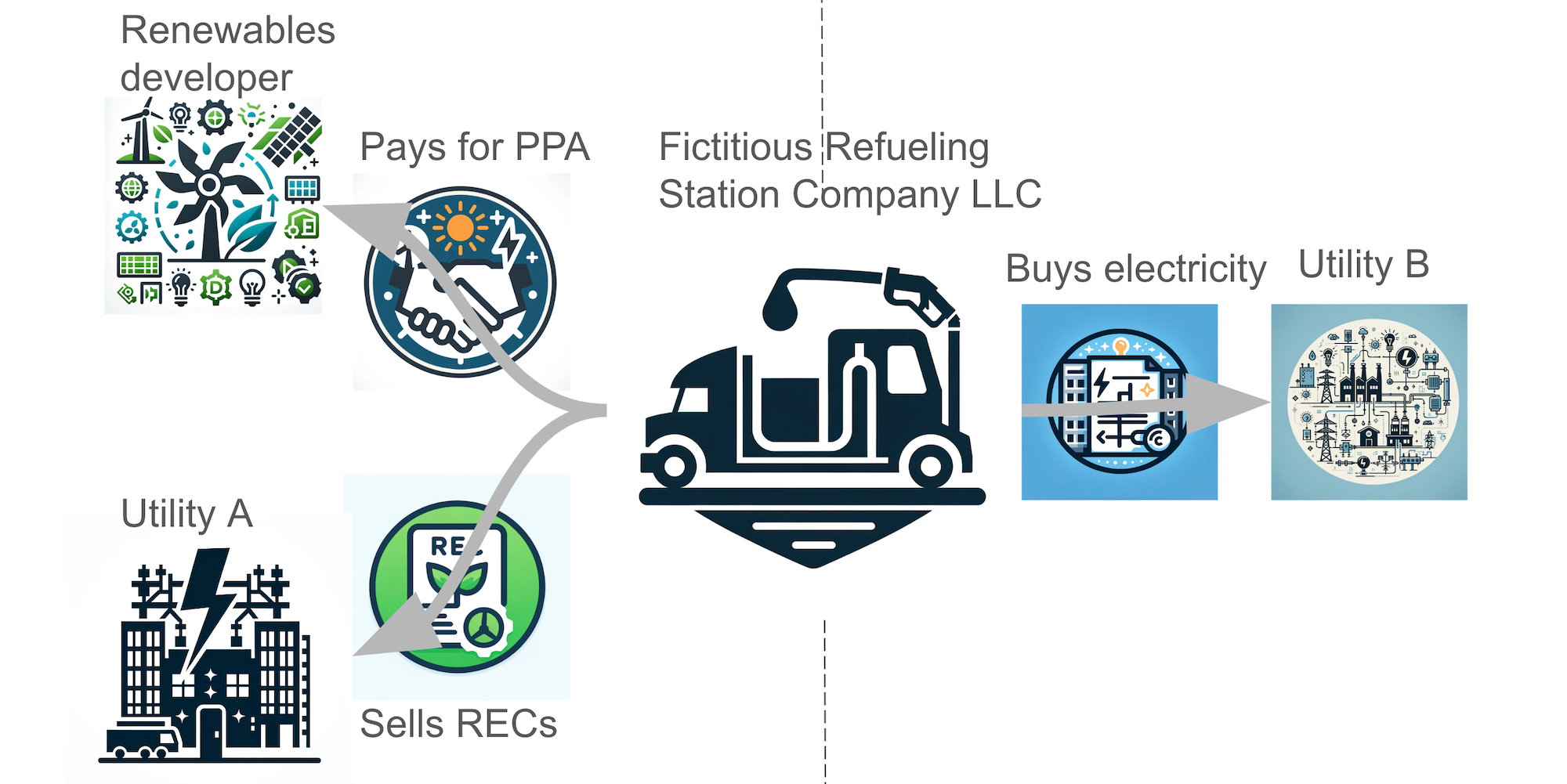In the past week I’ve been involved in an odd conflict with researchers at the International Council on Clean Transportation (ICCT). I’ve been trying to explain to them why their costing of electricity for hydrogen manufacturing makes absolutely no sense, and I haven’t been able to get through to them. It turns out I was giving them too much credit for understanding anything at all about electricity generation and distribution.
What’s been happening? Well, the ICCT released a major total cost of ownership report recently for heavy goods vehicles in Europe. Those are the big trucks that carry 35 tons of goods along the highways. It had three extraordinary claims that were clearly and obviously in error. The first claim was that manufacturing hydrogen at a refueling station from electricity and water would be cost competitive with diesel in 2030. The second claim was that the energy costs per kilometer would be only 50% more than using electricity in battery electric vehicles in 2030. The third claim was that hydrogen would be only 10% more expensive than using electricity in battery electric trucks in 2050 on a per kilometer energy basis.
These are extraordinary claims and as such require extraordinary evidence, but there was no extraordinary evidence presented.
Why are the claims extraordinary? Because manufacturing hydrogen with electricity and using it in fuel cells is at best a third of the energy efficiency of using it in battery electric vehicles. Three times the electricity will cost three times as much. The first is physics. The second is economics.
Was there any recognition in the report or ICCT landing page that the claims were extraordinary? No. Was there deep evidence in the report that justified the extraordinary claims? No. There was just the assumption of price of a kilogram of manufactured hydrogen would be based on dirt cheap electricity and that this was completely reasonable.
There are potential ways around this that have their own deep flaws, but if you are at the end of the distribution grid buying electricity from a utility and either putting it into batteries or putting it into manufacturing hydrogen, you are paying the same price for the electricity at any given time. This is incredibly basic stuff about buying electricity from utilities.
I published a piece pointing out the clear failure and tracing it to an earlier ICCT study by different authors which had very naive assumptions about electricity rates being dirt cheap for grid-delivered electrons to refueling stations while the same wires bringing the same electrons for battery electric vehicles were priced at full commercial rates.
I assumed, in good faith, that the ICCT would recognize that the same electrons at the same place through the same wires wouldn’t cost different prices, and that the new study’s authors would realize the mistake and they and the ICCT would retract and fix the report with the extraordinary claims. No such luck.
What happened next was that one of the lead authors doubled down on the assertion, defending their methodology as deliberate and appropriate.
So I tried again, explaining that at the station firmed electricity required a bunch of stuff and that green electrons under PPAs needed to not only have additionality but temporality and locality. Good sophisticated stuff for a discussion with people who understand electricity. Any luck? No.
At this point the lead author was getting annoyed, trying to defend what was clearly indefensible, vastly lower rates for electricity for manufacturing hydrogen at the same place where electrons would alternatively be put into batteries. They were arguing about how much more or less they were pricing electricity at, claiming my numbers were wrong, when they didn’t understand that the entire basis of their argument was flawed.
Unfortunately, I misunderstood their level of sophistication related to wholesale vs commercial electricity rates, PPAs and RECs. So here’s a bit of a primer, going back to stuff I assumed that they had understood but clearly didn’t. I had been asserting naivety on the part of the first study’s authors, but hadn’t realized how naive the study was or that the authors of the new study didn’t know the basics either.
To be clear, I’m not trying to pick on the ICCT or the authors of the trucking TCO paper. They don’t understand some things and as such the edifice of their analysis is simply wrong. They have to fix that. And if the ICCT gets something this basic wrong, so do a lot of other organizations. And that means a lot of the discussions around hydrogen for energy are fatally flawed.
So here are the basics.

A power purchase agreement (PPA) for renewable energy and the associated renewable energy certificates (REC) are completely decoupled from the commercial price of electricity a company pays a utility.
PPAs pay for construction of a wind or solar farm that is attached to the grid. The organization paying for the PPA receives RECs. They sell RECs on a market for those instruments. The sale of RECs pays for the PPA, more or less. A group within the financial side of the company does this on their behalf. The company does this to ensure that somewhere on the grid there are green electrons regardless of the electrons that they are purchasing at their facilities.
Meanwhile, completely separately from the PPA and REC group, an operations group signs contracts with utilities local to their facilities for provision of electricity at commercial rates. The local electrical utility is rarely a party to the PPA and even if it is, it’s a different part of the utility and a different contract. It does not change its commercial rates for electricity because the company has a separate contractual agreement with other entities to buy green electricity and sell RECs. They are completely decoupled processes.
Separate groups. Separate monetary flows. Separate transactions. Separate legal agreements. Different parties. Not coupled but decoupled.
For a refueling station on a highway where trucks will refuel, the PPAs and RECs are completely irrelevant to the price of electricity delivered to the station. The only relevant factor is the local utility and their commercial rates. Buying electricity from the utility for batteries or hydrogen has no bearing on the price of electricity. The price of electricity at any hour or level of demand will be identical in both cases.
There are complexities around peak power demands, managing peak power and arbitraging time of use billing which I also alluded to in my earlier articles, assuming I was dealing with researchers who grasped the basics above. As a result, much confusion, not much light on their side. There is a minor exception case where wind and solar farms are built in close proximity to the facility which is purchasing the electricity and the utility providing the electricity is an integral part of the PPA and REC contractual agreements. This won’t apply to refueling stations on highways for the most part, would apply equally to battery electric and hydrogen fuel cell trucks and should not be the base case.
And so, this piece, going back to what I assume is the fundamental lack of understanding on their part about how electricity is actually bought and sold. This is, again, really basic stuff about pricing electricity. My assuming that people who clearly favored molecules for energy would understand this despite a few years of continually running up against the same lack of comprehension is my bad. I should have started with the basics.




